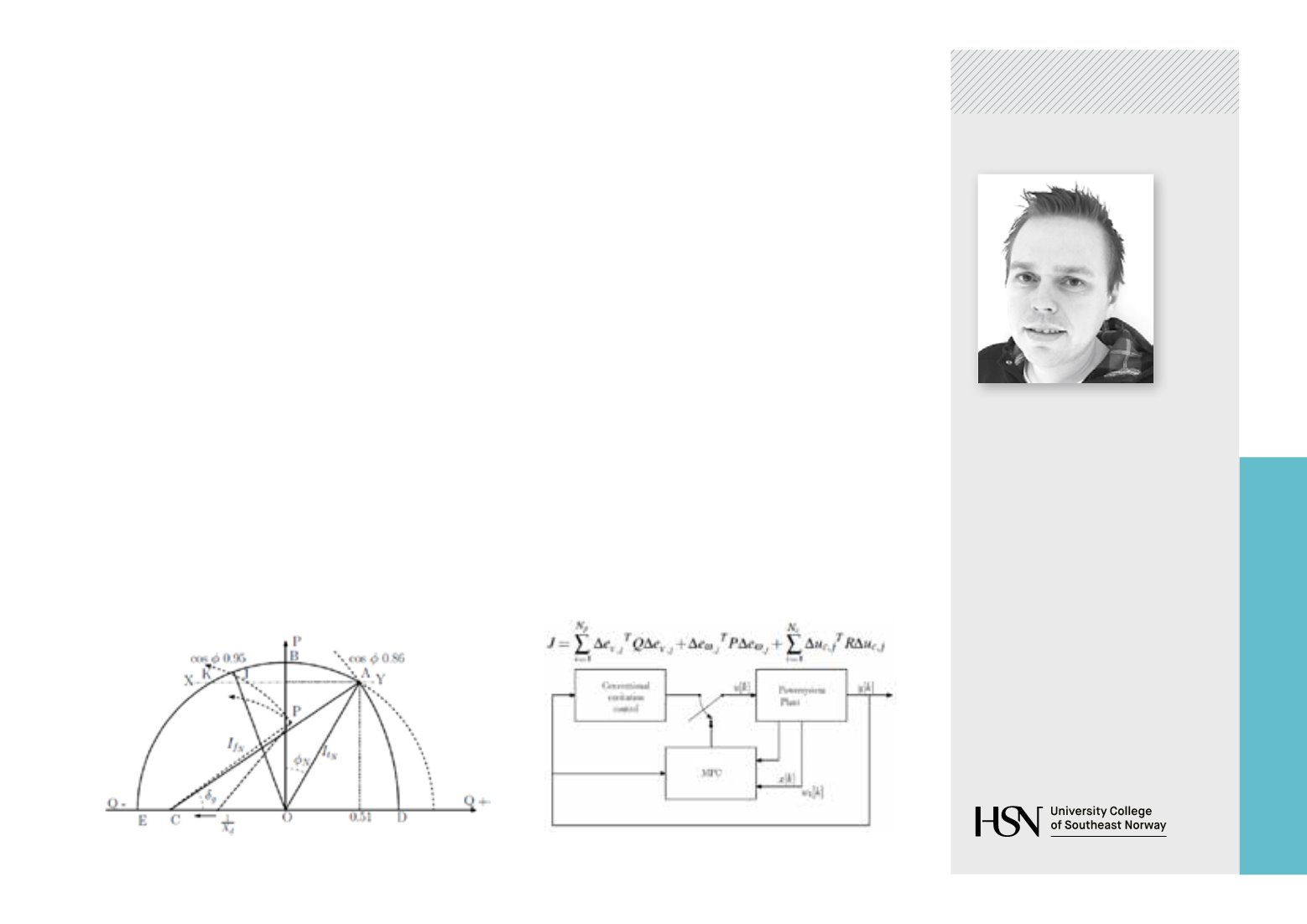

PHD THESIS
Background and objectives
The Norwegian Network Code FIKS from the
NorwegianTransmissionSystemOperator (TSO)
Statnett, states that synchronous generators
≥
1 MVA must connect to the grid with a cos
φ
≤
0.85 capacitive and
≤
0.95 inductive. Reactive
power can be used to compensate for voltage
drops in a power system, but must be provided
closer to the demands than real power needs
due to transportation limitations of reactive
power through the grid. Flexible power factor
control on large synchronous generators
located close to points of high demand
could enhance the voltage stability of a power
system Model Predictive Control for voltage
control through field excitation of hydroelectric
generating units is investigated.
Typical objective criteria:
•
An attractive feature of MPC is its capability
to handle Multiple Input, Multiple Output
(MIMO) systems and nonlinear systems
taking constraints into account.
•
With increased provision of reactive power,
the generating unit will be more mechanically
stressed. Due to these stresses an
investigation of thermal performance of the
generating unit by varying the ratio of active/
reactive power provision will be done.
•
An optimal utilization of thermal capacity
and cooling mechanisms of hydroelectric
synchronous generators should be found and
compared with design and standards. Thanks
to Statkraft for funding the study.
Process, Energy and
Automation Engineering
2014-2018
Improved Functionality
of Power Systems
Using Model Predictive
Control
Supervisor:
Bernt Lie
Co-supervisor:
Gunne Hegglid
Thomas Øyvang
Structure of plant and controller. Here, MPC is a Single
Input, Multiple Output (SIMO) controller.
Capabillity diagram of a synchronous generator.
89
















